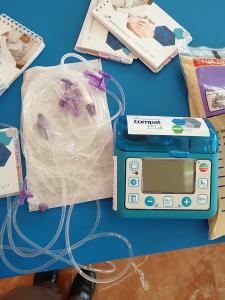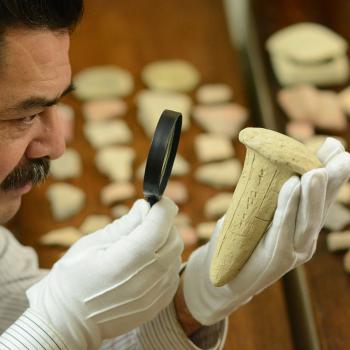
It is important to hit the pause button at key times when addressing conflicts. In stressful situations involving tensions with others, we need to pause, collect ourselves, and readjust in the attempt to address the conflict appropriately. Esteemed psychiatrist and concentration camp survivor Viktor Frankl wrote: “Between stimulus and response there is a space. In that space is our power to choose our response. In our response lies our growth and our freedom.” Hitting the pause button is fostering the space to choose a fitting response in the attempt to resolve the conflict.
“Hit the pause button” is a relevant expression in my experience since my son Christopher endured a traumatic brain injury in January 2021. Allow me to develop the metaphor before returning to its relevance for addressing conflict situations.
As you may know, Christopher is bedridden and in a minimally conscious state. He depends on a feeding tube for nutrients. Whenever CNAs change Christopher, they are required to ask the nurse to hit the pause button on the feeding machine before lowering him to a horizontal position. The care facility requires that his bed is at a thirty-degree angle or more when the feeding machine is running. Though simple, this procedure is critical to Christopher’s safety and wellbeing. Otherwise, he could get aspiration pneumonia.
What is aspiration pneumonia? According to Mt. Sinai, “Aspiration pneumonia occurs when food, saliva, liquids, or vomit is breathed into the lungs or airways leading to the lungs, instead of being swallowed into the esophagus and stomach.” When someone with a significant brain injury is in a horizontal position, and the feeding machine is running, they are at greater risk of aspiration pneumonia. For example, they may have a “poor gag reflex” that does not keep the substance for going back up the esophagus and down the airways into the lungs.
There are markings on Christopher’s headboard and bed frame to show the correct angle, as well as signs that highlight the importance of pausing the feeding machine when changing or repositioning Christopher. Again, it is such a simple matter, but still so vitally and critically important.
As with feeding machines, it is important to hit the pause button on feeding conflicts. Without the right angle to attain proper balance or leverage as in equilibrium, the stimulus from the conflict may overwhelm our emotional state and make it impossible for us to breath. We need to hit the pause button, not the person. It is vitally and critically important that we pause engagement until we can get a better angle at which to address the conflict in question.
Hitting the pause button until we can gain a better angle entails the following:
- Hold off saying, writing, or doing anything head-on until we can gain composure.
- Center ourselves in prayer, Scripture, and with deep breaths. My morning devotions with that first cup of coffee has been a life saver the past year. Take for example the epistle of James. Like the rest of Scripture, James was written for everyone, including those with two ears and one mouth: “My dear brothers and sisters, take note of this: Everyone should be quick to listen, slow to speak and slow to become angry.” (James 1:19; NIV) Just think how many of us would endure far less grief if we took James’ prescribed medicine to heart!
- Seek advice from someone astute at approaching conflicts, including the situation in question.
- Involve others, when appropriate, who can assist with navigating or mediating the situation toward resolution.
Further to these points, if I am smart in addressing a particular conflict, I engage in self-awareness and self-management exercises. I ask myself the following questions:
- How emotionally on edge am I?
- What do I easily default to as to a conflict strategy when I am under stress?
- Will that default strategy serve the situation well?
- What conflict strategy should I use in a given situation?
- Who am I dealing with and how do they approach most conflicts?
- Who can serve as an ally or trusted mediator of both parties to help us resolve the situation?
- What is at stake in the situation?
- What is the most important problem to resolve?
- What can be put on the back burner for the present time to address the most important matter at hand?
- What am I willing to risk to attain the needed resolution?
By no means is this an exhaustive list. But in every conflict situation, including my son’s care, I try to make points as well as allies, not enemies, as much as possible.
It takes time to discern these various dynamics. While not every situation allows significant time for reflection, I need to account for these items as much as possible and measure my response in view of them. I need to hit the pause button to find that space between stimulus and response to discern the right angle to gain equilibrium to address the conflict as responsibly as I can.
I have a long way to go in learning how to address conflicts well. This Friday and Saturday, I will have opportunity to learn more as I participate in a New Wine, New Wineskins conference on peacemaking. You can join us in person or over Zoom. It’s titled “Blessed Are the Peacemakers,” taken from Jesus’ beatitude recorded in Matthew 5:9. For more information about the conference, please go here. Thank you.
To read the various updates on our journey with Christopher and TBI over the past fourteen months, please go to this link. Thank you for your prayers.












